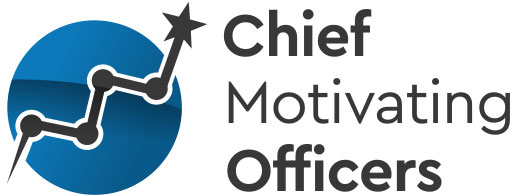There have been many occasions during which I’ve listened to the lamentations of a first level leader, who has been struggling with the behavior of employees. However, the struggle is not with their output, or really their performance at the job tasks in their job descriptions. It’s often those harder-to-define aspects of our everyday interactions with one another that get under the leader’s skin. Communication, professionalism, leadership, and a big one: respect. They cry, “These (millennial*) employees are so disrespectful! How do I get them to show me respect??”
*(Side tangent: I input the “millennial” here, as this has often been the clarifier of who the problem population is. I add this here to add some perspective for those struggling with generational differences in the workplace from a behavioral perspective as you read on. – Love, a millennial OBMer.)
First, I typically ask the million-dollar question: What behaviors have you defined as comprising your organization’s definition of ‘respect’? This is crucial for all of these “soft skills”: We cannot collect data and provide feedback and coaching on something that is ill-defined, or not defined at all. What observable and measurable behaviors would have you thinking this person is showing respect?
Second, do you think the disrespectful person defines “respect” in the same way? What I consider to be respectful (or disrespectful) is likely very different from you, and very different across cultures, and even across different organizations! For example, individuals who grew up with cell phones and smart phones might not see texting in their sick notice or meeting cancellation as disrespectful: we’ve always had this technology to facilitate communication, and wouldn’t be bothered (or would even prefer) if someone else communicated to us in this way. However, someone who didn’t have the same learning history might think that having an actual phone call is more respectful. Therefore, the action of texting my colleague a meeting cancellation has no mal-intent, but may be perceived as offensive by someone else.
This difference in operational definitions can often be linked to the tension and disagreements between leaders and employees within businesses, and the best way to get ahead of these miscommunications is to take the time to define what “respect” means in your organization. It’s often on the list of cultural values in businesses, but we need to know what “respect” actually looks like for our team. One of the best ways to nail down these definitions is to hold a focus group of employees from different backgrounds and learning histories, and challenge them to come to a consensus on what “respect” means. Have them give examples and non-examples of scenarios that demonstrate “respect”, and see the group agrees to these. Write down the list that everyone agrees to, and ensure that the behaviors are well-pinpointed: can multiple people agree whether the behavior has happened? Is there room for interpretation? Keep working until you have clarity and agreement, or at least a mutual understanding that this definition is what “respect” means once we walk through the doors of our organization, even if outside of the work environment, our interpretations and behaviors of “respect” change. Behavior, after all, is context-driven: what is reinforced in one environment might not be in another.
Now that you have definitions, examples, and non-examples, this needs to be communicated to the broad population of employees and ensure everyone understands (again, even if they don’t agree). Create your policy or value statement on employee respect, put in in your employee handbook, send out an email update, and (for extra assurance) require a response to ensure it has been received and is understood. A technique I’ve used is to provide a short quiz on the policy (a la Google Forms), and use the scenarios we discussed as a learning opportunity: does this example meet our definition of respect at X Org? This will have employees thinking critically and demonstrating that the definitions are clear. Then, revisit the definition periodically with employees to keep these behaviors on the forefront of the culture.
After defining and communicating, as a leader your next step is to model the behaviors in your actions everyday. Show employees how it’s done. Make a concerted effort to integrate those “respectful” behaviors into every interaction. Nothing undermines an effort like this more than leaders in the organization behaving as if these policies and values are only for front-line employees. And if (WHEN) you do make an error, own it. Have a frank conversation with your employees, describe what behavior you engaged in that was a poor example of “respect”, and what you should have done instead and will do in the future. This doesn’t need to be a long staff-meeting-style disclosure; as long as you touch upon the “What? So what? Now what?” (see the Critical Reflection framework for more info on this model) to the employees that observed the discretion, you’ll be good to go.
Finally, ensure that employees contact reinforcement for those behaviors that fall into the definition of “respect”. No, you don’t need to break out the token board or dollar bills necessarily; just acknowledge that you observed the behavior and appreciate their efforts to contribute to our “respectful” workplace. Especially for previous “offenders”, make sure they contact positive consequences of their behavior change so you can shape their behavior further. (Note: To ensure the highest level of social validity, make sure to ask employees if they prefer public or private praise before delivering positive feedback!!) Integrate it into your supervision or performance evaluation meetings, and state what they did that demonstrated “respect”.
To summarize, if you’re a leader seeking to increase “respectful” behavior in your workplace:
- Define what “respect” looks like in your organizational culture. Provide examples and non-examples, and make sure there is no room for interpretation!
- Communicate the definition to everyone, and check for understanding. Revisit periodically.
- Be a model of the definition of “respect”, and own it when you slip up.
- Provide reinforcement and shape up the behaviors you’re looking for.
Here are some examples of behavior that often fall into the category of “respect” for many organizations:
- Providing useful or affirmative comments to peers
- Stepping in to assist or having a conversation when a peer requests help
- Asking questions during instances in which a peer has more experience with the topic or skill
- Maintaining confidentiality
- Expressing gratitude when a peer helps out
- Being candid and honest when a peer requests feedback
- Using language that the individual has experience with, and avoiding use of jargon
- Responding to everyday communication within 48 hours, urgent communication upon receipt
- In social contexts, introducing peers during conversations with people they may not know
This, of course, is not an exhaustive list, but are just some examples that I’ve run into during my career. You can see, I’m sure, how clarifying these behaviors, rather than settling on “respect”, will help employees engage in the behaviors you’re looking for. Respect is simply an umbrella term for a series of behavior, and getting really precise about those behaviors is essential for getting the behavior happening.
I hope this has provided a starting framework for getting more “respect” from your employees (and reducing your frustration *slightly* about “millennial” employees!). Get everyone on the same page, and reinforce! This strategy can be used across any and all organizational values (think: leadership, communication, collaboration) to help get those behaviors that support the values going! If you have any questions, feel free to reach out to me, shannon@www.chiefmotivatingofficers.com.

